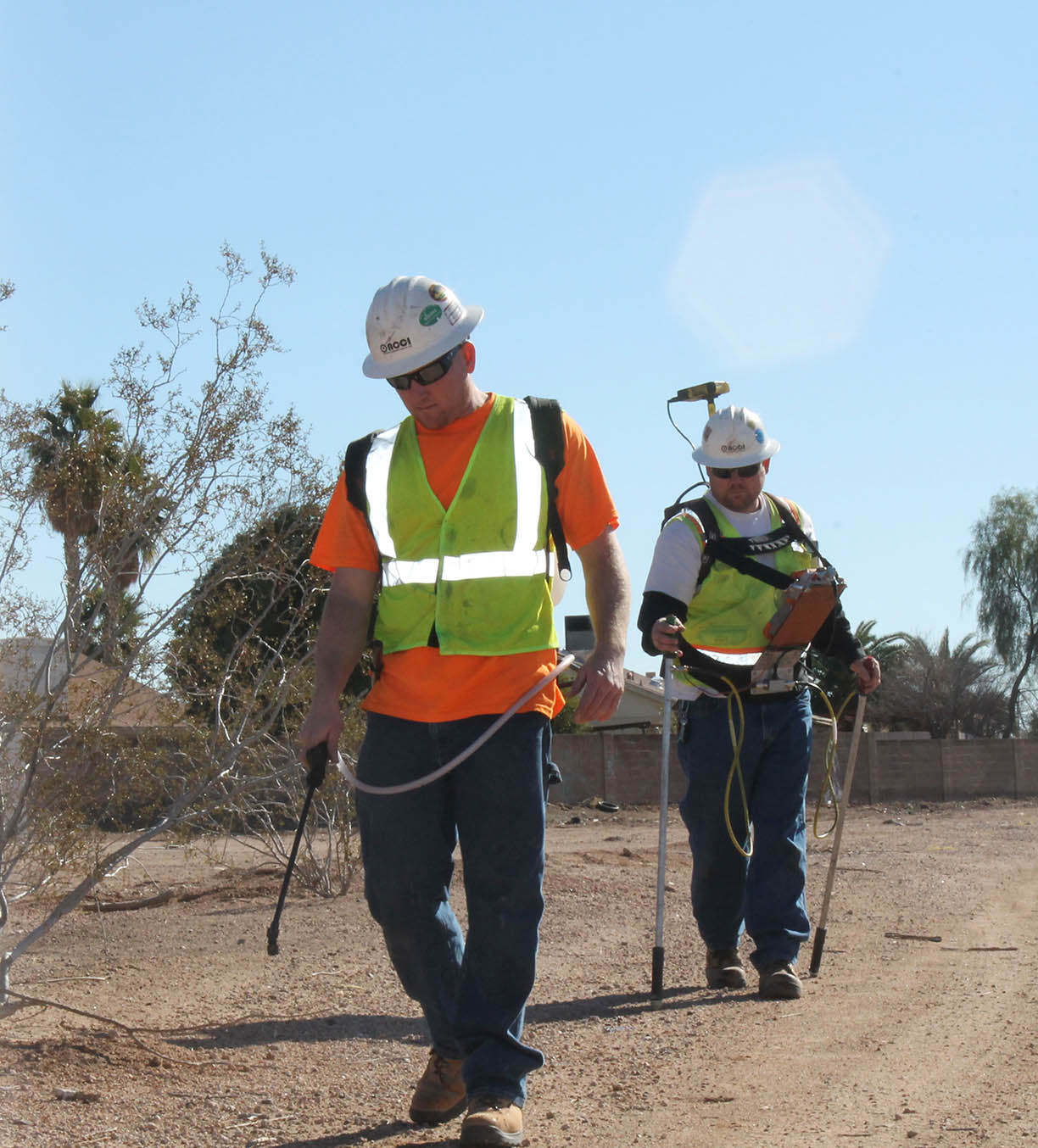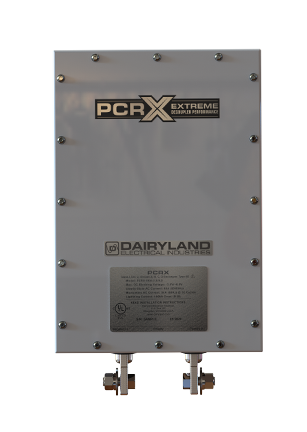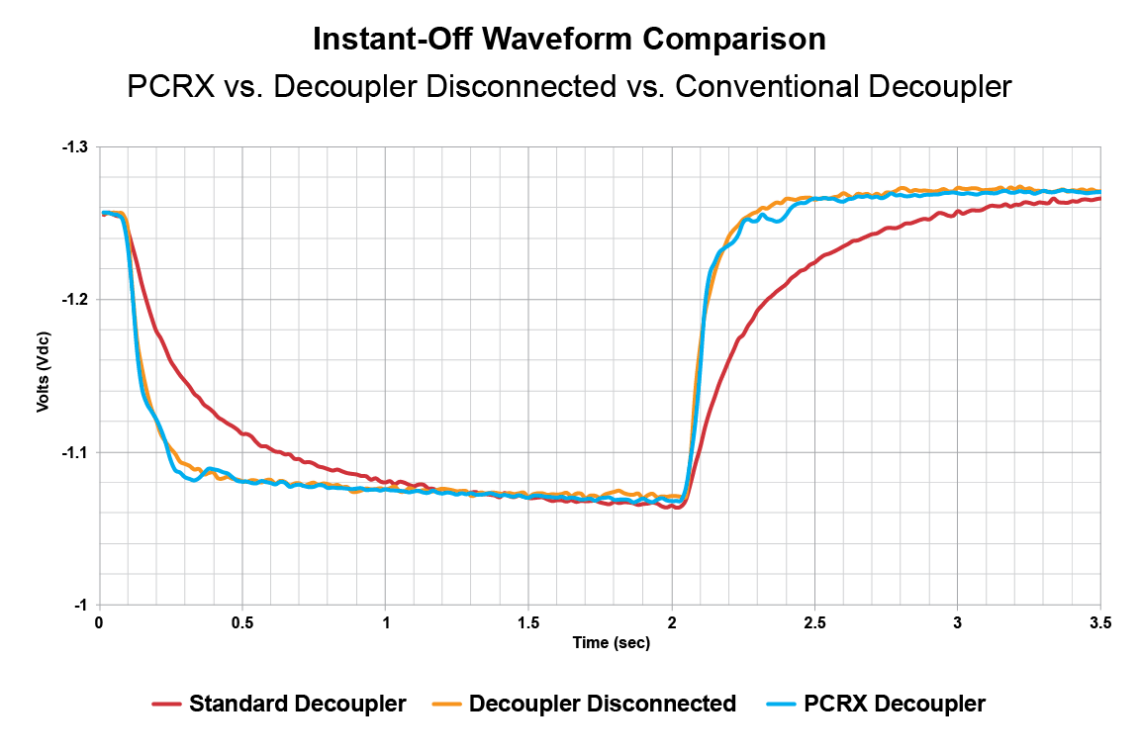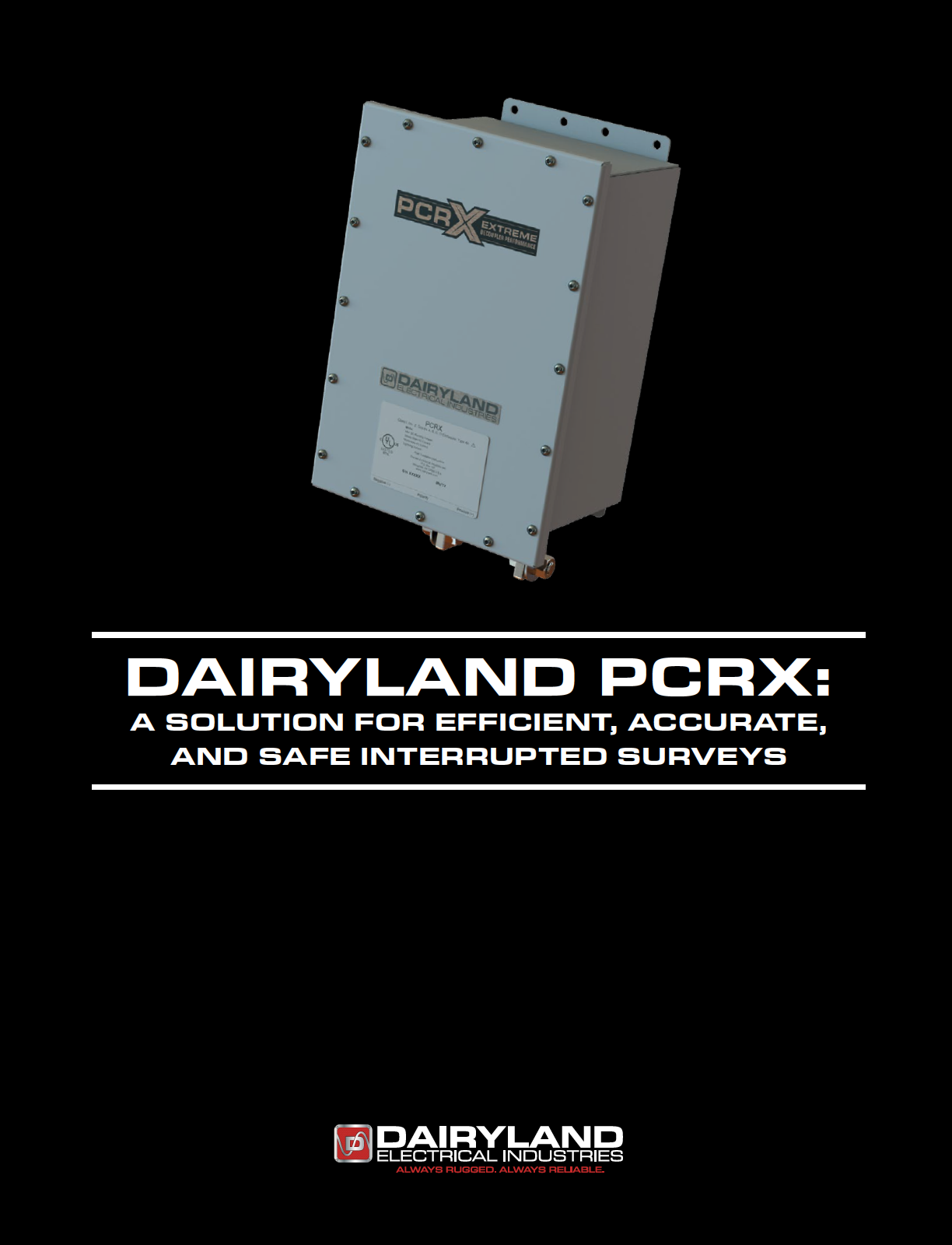Technical Article
Utilizing the PCRX to Address Capacitance Issues During CIS Testing
Introduction
Pipeline companies utilize cathodic protection to overcome external corrosion concerns. Owner interest in extending the life of the asset also generally includes addressing safety matters, which are often accomplished by solid-state decoupling products, such as those made by Dairyland Electrical Industries. Together, cathodic protection systems and decouplers address the multiple needs of corrosion prevention, isolation of CP from other structures, and safety grounding. Decouplers are a key part of the modern CP system on pipelines and other protected structures and both improve CP system performance and deliver required safety protections.
CIS Testing Interference
Corrosion prevention is efficiently provided by impressed current systems, and system effectiveness is regulated on most major pipeline systems by governmental authorities, such as the Department of Transportation (DOT) in the United States. Such compliance, as well as pipeline owner self-interest, is proven by various measurements, some of which include coating surveys and potential measurement surveys. A Close Interval Survey (CIS) is one such evaluation, accomplished by the user synchronously cycling all current sources, typically rectifiers, on and off at set frequent time periods. By examining the resulting potentials during on and off periods, the user can determine if compliance to corrosion criteria has been met, or remediation is needed in certain areas.
For safety and convenience, decouplers remain connected to the pipeline while the CIS is being performed, and in some cases the user may see unexpected results in the potential survey. Waveforms depicting the pipeline potentials over time may show a more slowly decaying potential during the off cycle, and likewise a slower response during the on cycle when the GPS interrupters turn the rectifiers back on. The resulting time-based absolute potential values during the off cycle therefore will not be as expected, appearing too electronegative. As cathodic protection compliance is based on such measurements, this can confuse the user and raise questions about their system operation.
Learn more about the CIS testing issue in this video
Decoupler Capacitance
Testing has shown that additional capacitance, typically from the decouplers but also from coating characteristics, slows the response of pipeline potentials. Decouplers, however, are essential safety devices and cannot be removed from the pipeline in most conditions. For example, the decoupler capacitance provides the needed low impedance to AC power frequencies that cause induced voltage to appear on pipelines near adjacent power lines. Industry standards, such as from the Association for Materials Protection and Performance (AMPP), limit the allowed voltage on pipelines for personnel and public protection, and Dairyland decouplers accomplish that function.
For perspective, users may consider why this is a problem observed in more recent years and not as much in the past. There are several factors that play a part in this. First and foremost, pipeline coating quality has improved dramatically, to the point that mere milliamps of CP current can protect many miles of pipeline. A pipeline that can be easily shifted in voltage for the purpose of cathodic protection can also be easily shifted due to any other source or effect. Stray direct current and induced alternating power frequency current are examples of other sources that can shift pipeline voltage quite effectively. Second, decoupler use has increased as users apply these devices for effective AC mitigation, lightning and fault protection, and DC isolation of grounding systems. This capacitance is additive to the coating capacitance. Finally, as CIS has become a more established technique and users look at resulting waveforms, awareness is increasing about this effect.
Addressing Decoupler Capacitance Issues
Users then often wonder how to address this dilemma. There are some techniques that may allow a user to compensate for this capacitive effect and still obtain acceptable readings. These include capturing the potential later in the off cycle period, extending the on and off time period durations, using IR-free coupons as an independent measurement, or in some cases disconnecting the decouplers (requiring a review to safely accomplish). Each of these approaches have pros and cons regarding accuracy, convenience, and safety. As decouplers are a normal part of the entire pipeline cathodic protection system, the intent is generally to leave the system intact as the current sources are all cycled together to obtain an acceptable CIS. Modifications to the CP system are discouraged, when trying to test the effectiveness of the installed system. Yet, in the end, valid absolute potentials are needed to compare to industry criteria for compliance. Dairyland has been deeply involved in research on the causes, effects, and possible solutions to this troubling and challenging problem.
PCRX – Extreme Decoupler Performance
Thousands of hours of research, development and field testing have resulted in a new innovation in decoupler technology.
Based on our company history of creating rugged and reliable solid-state devices to address demanding energy industry needs, the PCRX performs all of the expected Dairyland decoupler safety and isolation functions, and adds sophisticated solid-state systems to provide a correct CIS response. The PCRX is effectively camouflaged, invisible to changing potentials during a close interval survey, yet still accomplishes mitigation of steady-state AC induction as well as waits in anticipation of AC fault, lightning, or other events that require over-voltage clamping. Users who have become familiar with reliable Dairyland decouplers will enjoy those same isolation and safety features, along with overcoming CIS measurement issues in the new PCRX.
Field Testing Results
Extensive testing of the PCRX was performed over a period of years and at a number of pipeline locations. Sites with standard decouplers that had user-identified delays in CIS waveform response were selected as testing locations for the PCRX. Most sites surveyed had employed the decouplers for mitigation of AC induction from nearby power lines. Cycling the rectifiers on that pipeline or segment, using typical on-off periods, Dairyland engineers obtained “as found” waveforms with the decouplers connected. Next, waveforms were obtained with all decouplers disconnected from the pipeline, for comparison. Disconnection was done on a temporary basis using safe practices and utilizing AC voltage measurements for verification. After disconnection, waveforms generally showed a large improvement in response time, as expected. Next, the PCRX was connected in place of the existing decouplers, and waveforms were again obtained, resulting in a response that typically would mimic that of a pipeline with the decouplers disconnected. The pipeline potential waveforms below show a typical set of these three test conditions. Note how the PCRX response is essentially the same as with the decouplers disconnected.

The waveforms shown here were from a dry desert environment in the US southwest. The electrically continuous pipeline segment with the decouplers was 32 miles long, 24” diameter, with good quality FBE coating. A total of 8 existing PCR decouplers on this segment were evaluated for capacitive effects, producing the graphs shown, as they were compared to PCRX operation. Accurate results with the PCRX were achieved within 0.5 seconds, as seen above.
Conclusion
 Dairyland has provided a valuable new tool to the cathodic protection industry with the introduction of the PCRX. Able to respond quickly to cycling current sources, the PCRX allows efficient close interval surveys to occur, while retaining all CP isolation and over-voltage protection safety functions needed for pipeline operations. Adding to the complete line of Dairyland isolation and grounding technologies, the PCRX achieves substantial new improvements sought by the industry for years.
Dairyland has provided a valuable new tool to the cathodic protection industry with the introduction of the PCRX. Able to respond quickly to cycling current sources, the PCRX allows efficient close interval surveys to occur, while retaining all CP isolation and over-voltage protection safety functions needed for pipeline operations. Adding to the complete line of Dairyland isolation and grounding technologies, the PCRX achieves substantial new improvements sought by the industry for years.
Interested in learning more? Download the full paper using the link to the right for an in-depth analysis of the PCRX’s performance.
Want To Dive Deeper?
Join One of Our Learning Events.
Our event schedule provides you the in-depth product and application training you need to correctly apply Dairyland products.